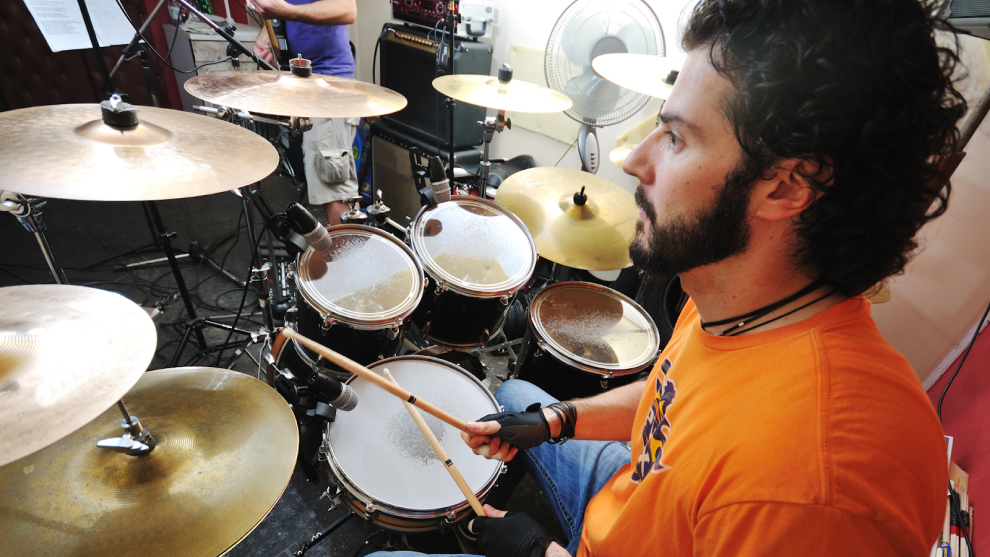Whether you’re grooving to funk, blasting through metal, or laying down a jazz shuffle, the building blocks of every great beat come from one place: rudiments. These foundational patterns are the drummer’s version of scales—short, repeatable sequences that form the basis of rhythm, technique, and creativity behind the kit.
While there are over 40 official rudiments recognized by the Percussive Arts Society, some show up in virtually every genre. Mastering these essential rudiments will not only make you a more versatile drummer but also give your playing the precision and flair that separates the amateurs from the pros.
Here are 8 drum rudiments you’ll use in every genre, and why they matter.
1. Single Stroke Roll
Let’s start with the most basic—and arguably most important—rudiment: the single stroke roll. This pattern alternates between right and left hands (R-L-R-L or L-R-L-R). It may seem simple, but it’s the foundation for speed, control, and symmetry in both hands.
Why it matters:
From fast fills in rock and metal to subtle ghost notes in jazz and R&B, single strokes are everywhere. Once mastered, they can be applied to tom runs, snare rolls, and cymbal crashes with ease.
2. Double Stroke Roll
Unlike the single stroke, the double stroke roll features two hits per hand (R-R-L-L). It trains rebound control and helps develop finesse at higher speeds.
Why it matters:
Double strokes are the secret weapon behind clean, fluid rolls and dynamic drumming. You’ll hear them in orchestral swells, funk fills, and gospel chops.
3. Paradiddle
The paradiddle alternates between single and double strokes in a four-note pattern (R-L-R-R or L-R-L-L). It’s a go-to for building coordination and adding rhythmic texture.
Why it matters:
Paradiddles are incredibly versatile. Drummers use them to create syncopated grooves, ghost note patterns, and fill variations. They also translate well to cymbals, creating linear patterns across the kit.
4. Flam
The flam consists of a soft grace note followed immediately by a louder primary stroke (like a mini echo before the main hit). It’s often used for emphasis.
Why it matters:
Flams add impact and flavor to snare accents, drum fills, and backbeats. You’ll hear them in marching bands, pop intros, and aggressive rock choruses.
5. Drag (or Ruff)
A drag is similar to a flam but uses two soft grace notes before the main stroke. It’s smoother and often used for rolls and dynamic phrasing.
Why it matters:
Drags show up in everything from jazzy flourishes to funk fills. They help drummers transition smoothly between soft and loud notes, adding dimension to phrasing.
6. Five-Stroke Roll
This rudiment combines two doubles and a single stroke (R-R-L-L-R or vice versa). It’s quick, controlled, and full of movement.
Why it matters:
Perfect for short, sharp fills in rock, Latin, or soul music. The five-stroke roll is also used as an embellishment in grooves and solos.
7. Single Paradiddle-Diddle
This six-note rudiment (R-L-R-R-L-L) expands on the traditional paradiddle. It creates a flowing pattern ideal for hand-to-hand coordination and speed.
Why it matters:
In gospel and fusion music especially, this rudiment is gold. Drummers love to use it across the toms and cymbals to create quick, seamless licks.
8. Flam Accent
A three-note pattern that combines flams with alternating strokes (Flam – R – L or Flam – L – R), this rudiment adds rhythmic color and accent variation.
Why it matters:
It’s a staple in jazz, swing, and fusion, where accents and dynamics are key. It teaches control, feel, and musical expression.
Why Rudiments Matter in Every Genre
No matter your style—funk, jazz, punk, reggae, hip-hop, metal, or even pop—rudiments give your drumming structure, speed, and style. They’re more than just practice drills; they’re the raw material of musical expression.
Here’s how rudiments come into play across genres:
- Rock/Pop: Tight fills and explosive choruses often use single strokes, flams, and paradiddles for dramatic effect.
- Jazz: Drags, flams, and flam accents add subtlety and swing to dynamic brushwork and improvisation.
- Hip-Hop/R&B: Ghost notes built from rudiments like the paradiddle provide the groove under a steady beat.
- Metal: Speed-focused rudiments like double strokes and five-stroke rolls are essential for blast beats and fast fills.
- Latin/Fusion: Syncopated rudiments fuel polyrhythms and cross-stick rhythms.
The Path to Mastery
Learning rudiments isn’t just about technical improvement—it’s about becoming a drummer who can adapt and create in any musical setting. And the best way to learn them isn’t always just repetition. Applying rudiments musically—into grooves, fills, and solos—helps reinforce their value.
If you’re looking to build a solid drumming foundation or level up your existing chops, consider investing in structured lessons. There are many drum courses online that walk you through these rudiments step-by-step, with real-world applications, practice exercises, and video demonstrations to help you play with confidence across genres.
Drum rudiments are more than just practice patterns—they’re the universal language of rhythm. By mastering a handful of essential rudiments, you equip yourself to play just about anything, anywhere, with anyone. Whether you’re jamming in a garage or laying down studio tracks, these patterns will be your best friends behind the kit.









